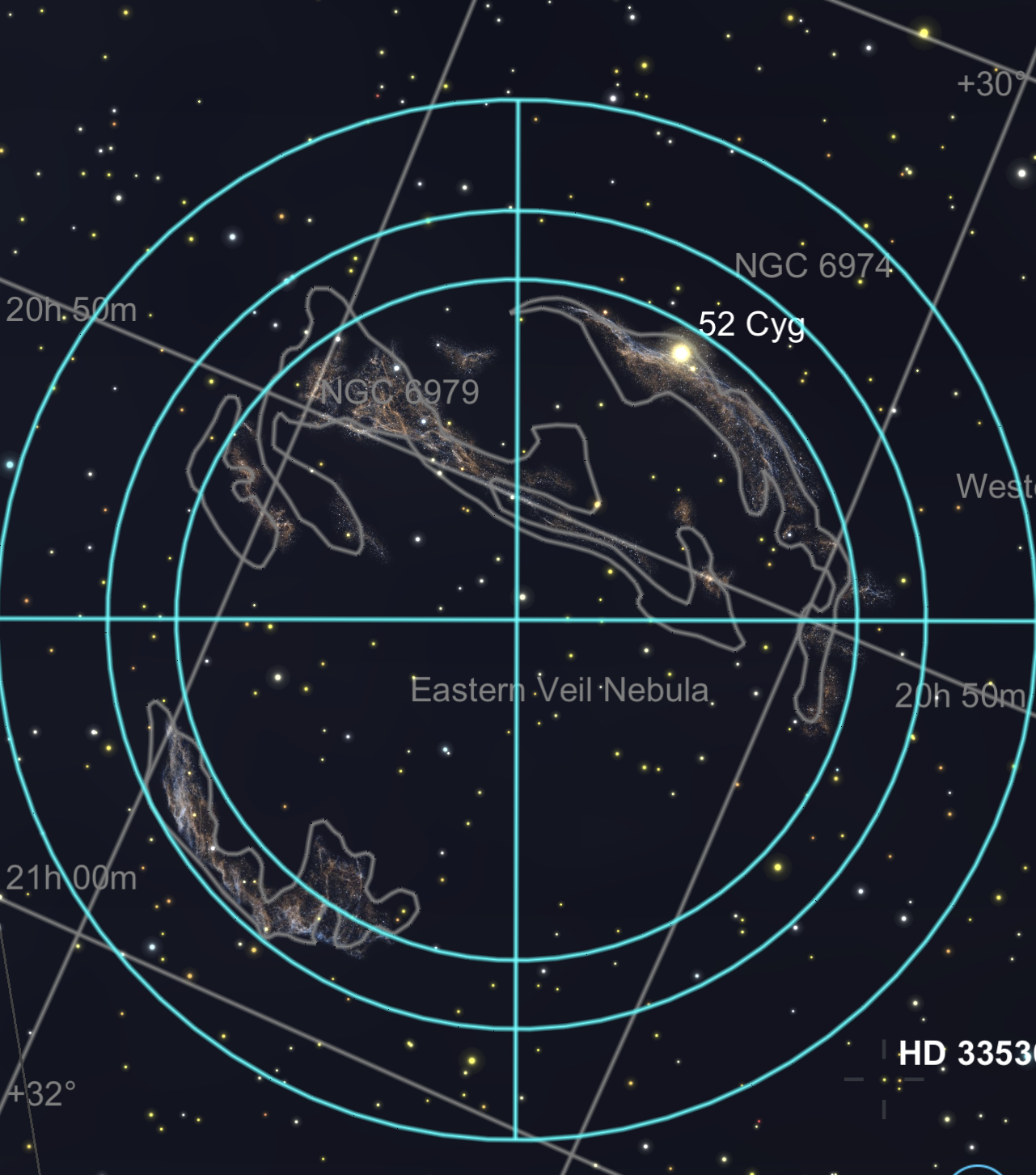Compared to telescopes, eyepieces are simpler. They have only a few of characteristics that really matter:
- Barrel Size: 1.25" or 2". All scopes accept 1.25" diameter eyepieces; most good scopes have focusers that accept 2" eyepieces.
- Focal Length: often the only number you see on an eyepiece is its focal length. It matters.
- Apparent Field of View: this is how wide the view in the eyepiece looks. Wide is better. Narrow is inexpensive; wide is more expensive.
Eyepiece Focal Length
The magnification through a scope is the quotient (mathemtical result) of the focal length of the telescope divided by the focal length of the eyepiece. An inexpensive 4-inch refractor might have a focal length of 1000mm.
A 1000mm focal length telescope using a 25mm eyepiece yields 40x magnification.
A 1000mm focal length telescope using a 10mm eyepiece yields 100x magnification.
There is a practical limit on the focal lengths of widely-available eyepieces which limits the magnification range and the absolute (true) field of view - the width of sky you can see through the eyepiece. Call the range 40mm to 3mm. For a 1000mm scope that would give you a magnification range of 25x to 333x.
Note that your maximum magnification is limited by a number of factors. A rule of thumb is that the maximum magnification for a telescope is the aperture (diameter) in millimeters times 2.
A 1000mm telescope with an aperture of 100mm will have a maximum useful magnification of 100 x 2 = 200x.
Given that the maximum useful magnification of a 1000mm scope is 200x, it makes no sense to have any eyepiece with a focal lenght of less than 5mm. If the scope is an inexpensive achromat refractor, its highest magnification, due to the limits of the glass used, may only be 100x. An eyepiece short than 10mm would be of no use.
So, for your telescope you'll want to have a low power, wide field eyepiece, an eyepiece for near the highest useful magnification, and then maybe some in-betweeners.
That's your focal length range.
The next decision is how much do you want to spend. Eyepieces vary quite a bit in price even at the same focal length. Assuming decent quality, the primary factor in cost is the Apparent Field of View. Wide is expensive. Ultra Wide can be Ultra Expensive. What is Apparent Field of View?
Apparent Field of View - AFOV
AFOV is the angle the eye sees looking from one edge of the image to the opposite edge.
There are two primary benefits to wide AFOV:
- at a given magnification, wider AVOF shows more sky
- wider AFOV is a more intimate, intense view of the sky
-
- many compare the narrow AFOV eyepieces as "looking through a straw" and the ultra-wide AFOVs as "like looking through a porthole".
The disadvantage to wide AFOV eyepieces are they are far more expensive than the narrow AFOV eyepieces.
For example a basic narrow 32mm (a wide field) eyepiece might retail for $50, the premium wide field wide AFOV, the Televue Nagler 31mm retails for about $700.
A combination of AFOV and the focal length of the eyepiece determines how much sky you can see for a given scope. Using the 31mm range (the wide end of the eyepiece spectrum), an eyepiece with double the AFOV will show four times as much space. Having the capability for wide views is a big deal.
Here's an expansive deep sky object, the Veil Nebula. It's a supernova shock wave that traces most of a circle. The two circles in the image represent the Fields of View from a 4-inch refractor with a narrow AFOV (44-degrees) and an extra-wide AFOV (82-degrees):

The wide eyepiece can capture the full limits of the circumference of expanding shockwave. The narrower eyepiece - it's the same magnification - captures only part of the nebula. In a manual mount, you can push the telescope around to examine the parts - that's actually kind of fun. With a GoTo scope you can push some buttons to move the scope around - that's not quite as fun. With the wide angle, you can see it all at once.
Insert a higher-power eyepiece to scrutinize pieces.
The second aspect of a wider AFOV lens is that you can see the same target at higher power - it spreads the image over a much wider area. You feel closer - it's a better more "in-person" experience. The middle circle below is a 20mm 100-degree eyepiece (the others are the 31/32mm) encompasses the full nebula. Through the eyepiece the targets look 50% bigger than the other eyepieces. You feel closer.

Telescopes have a maximum magnification capped by their diameter in millimeters times two. A four inch scope has a maximum useful resolution of around 200x (4 inches x 25.4 mm/in x 2 = 200). That's a maximum limit; most are more limited than that, inexpensive refractors in particular.
The point of this is that maximum useful magnification varies by scope